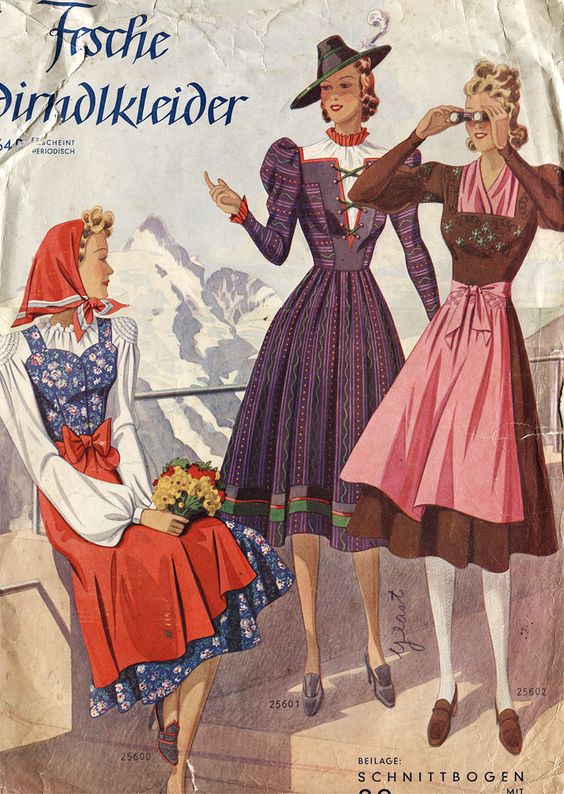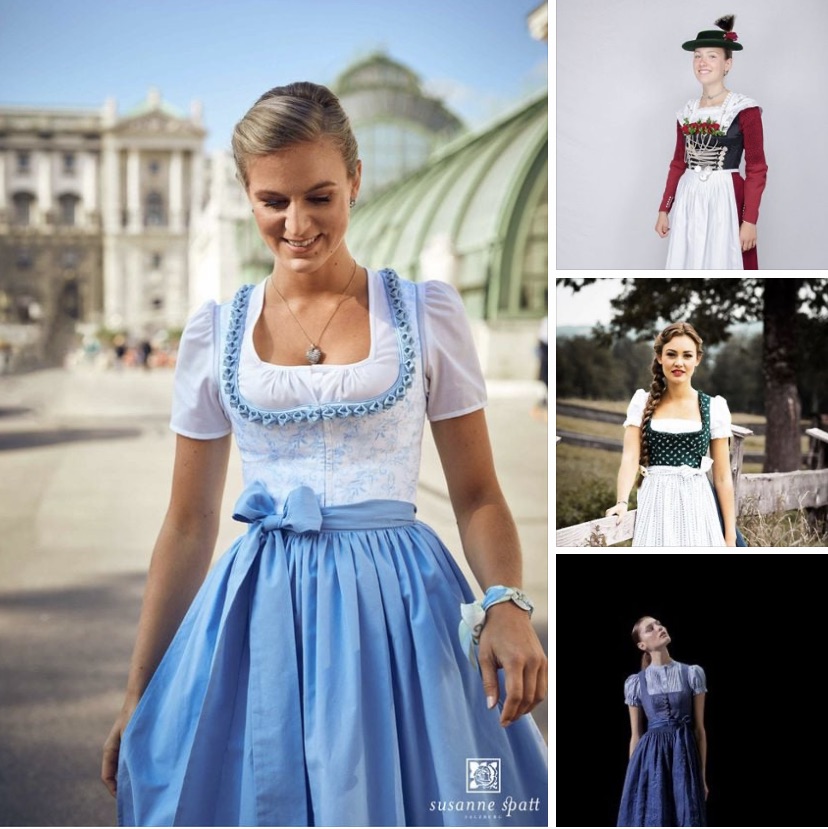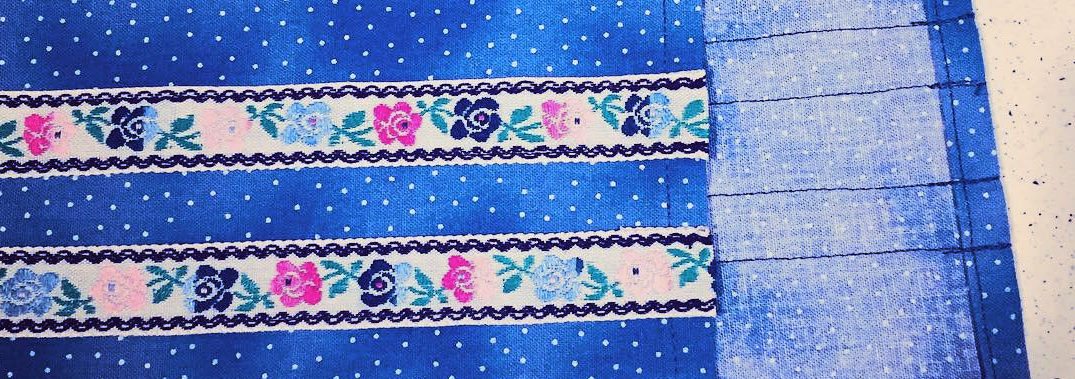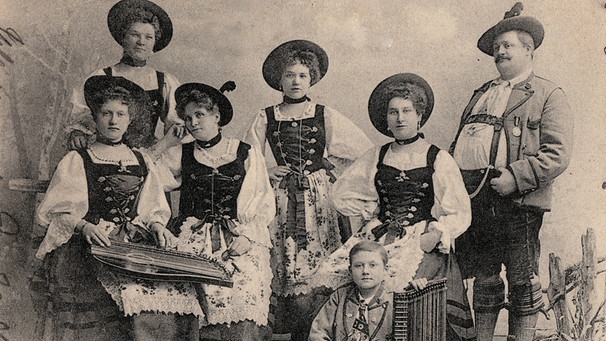
Recently we had interesting discussions on a Facebook post I did about dirndl beginnings and how they are “back in the news” so to speak. Here’s my post:
Did you know the dirndl is a “countrified” and fashionable version of Bavarian folk wear known as Tracht? In the late 19th century city women wanted more relaxing clothes for their countryside vacations. They adapted the folk wear they saw in rural villages, which has become what we call the dirndl today. Variations exist from elegant bridal wear to the club or beer garden look we see often at Oktoberfests. In the last decade dirndl wearing has become quite popular again both in the Germany/Austria regions as well as around the world.
Facebook post on Historical Sewing with Jennifer Rosbrugh, May 28, 2020
.
I so appreciate people chiming in! It was friendly and enlightening. 🙂
As one who greatly respects the Bavarian culture, I’m always open to learning more about it. Even though my DNA says I’m mostly German (all over southern DE) and my maiden name is German, my family has been in America for generations, so therefore I’ve sadly not had the deep heritage passed down to me.
While we study all things dirndl around here, it’s only natural to look at their history – all the good and bad of it. And it is quite interesting!
One thought that keeps coming up is the actual word “dirndl.” It is my understanding that it originally meant “girl” and “dirndlkleid” is a girl’s dress. Eventually (not sure when) it was shortened to simply “dirndl”.
But that doesn’t tell us much about where the dirndl dress came from. Or rather, evolved from.
In my research I’ve found the dirndl was the vacationing dress of wealthy women who visited the countryside in the summer months. Or, at least, they adapted what they saw women wearing in the rural villages and wanted to delight in the same style. I guess one might call it a souvenir of sorts. 😉
Yet maybe, perhaps, the dirndl was already called that in the late 19th Century. ?? But then the dirndl ensemble changed. The city women made it fashion, transforming it into a lighter version of the classic folk wear called Tracht. (Please comment with insights and links if you know about this!)
You see, as far as I know at this point in time, “Tracht” is the German word for “costume” or perhaps “dress costume”…. what we would call “folk wear” in plain English.
Yet “costume” in English covers a WHOLE slew of variances! A topic for another day, our word “costume” can mean anything related to clothing. A Halloween costume, historical costume, dance costume, cosplay or LARP costume, the 19th century word for an ensemble or toilette, even a work uniform today can be called a costume. (Why can’t English have as many distinctive words for “costume” as the Eskimos have for “snow”??)

So that brings us back to “Tracht” and “dirndl” and how the Bavarians (and Austrians and Swiss) use those terms to describe their regional folk wear, patriotic/national ensembles, and/or Oktoberfest clothes (the primary event the dirndl dress stems from).
There’s also “Landhausmode” too, which I believe describes the distinct regional folk wear dress worn in country villages. (See comment below – apparently this is what we would call a cheap Halloween-type costume worn to Oktoberfest as a tourist. Oy!)
And here we are, with our English language, left with mere “dirndl” and “costume” and “folk wear” terms to describe such colorful and detailed clothing of people in the Alpine areas of Europe. Lost in the translation of the language. Simplifying a culture’s clothing history.
But even if our words can’t quite describe the beauty of Tracht, I have felt very welcome by those attached to the Bavarian and Austrian areas who enjoy wearing dirndls and delight in seeing others appreciate them, too. Thank you for continuing to teach us about your heritage – fashion and folk wear alike! <3
Please comment if you can add to this ongoing conversation!



Yes, this post is awesome Jennifer. This reminds me of the Von Trapp Family from the “Sound Of Music”, where girls wore dirndls those days. When I read this post, I get to learn interesting facts about that outfit. I have heard this famous piece of clothing in children’s books, movies, and festivals. (I thought dirndls remind me of the great olden days). And why did you want to talk about sewing dirndls in February of 2018?
For me Landhausmode isnt sexy german beer style. I would describe it as what the bit outdated older aunt is wearing. Bit folk, some coarse grey linen, some rustic style.
Ah! Interesting! Thank you for this. I’m getting that Landhausmode is more fashion or clothing based on Tracht but doesn’t look much like it.
So the “sexy German beer girl” is truly from the St. Pauli logo that’s been taken to mean Bavarian folk wear yet has nothing to do with it. That really is a “dress up fancy costume” for both German speakers and English.
I had to look up the st pauli beer logo to understand your comment – so st. Pauli in my world is the hamburg red light district with prostitution, drag queen shows, strip clubs, violence, tattoo parloirs you name it. Its the district were the sailors had fun. Second denotation jumping in my brain would be the st pauli football club with the black flag of cross and scullbones. Hamburg is the total opposite of munich, a former hanse evangelic northern coast port town, probably the farest you can be from bavaria and the idea of “dirndl” in culture, religion, history and language. Its very weird for me to see this two things mixed together. I havent ever seen this beer in a shop (neither in the british or us army shop) in germany and in the wikipedia page its said it isnt sold in germany, just brewed in bremen (former hanse northern port town as well) and exported to US which explains a lot. Except the short week of the oktoberfest as a fun gimmick i cannot imagine it to be sold in a german retail store outside of bavaria, its would be too trashy and weird, it wouldnt survive any st pauli fan.
That is very interesting about the beer! And quite possibly the reason it’s a bit derogatory to Bavaria and the culture of Oktoberfest, and dirndls too. THAT to me is the watering down of true Bavarian culture and why most Americans don’t know it’s not a true representation. 🙁
Good article! I’d like to add my two cents on “Landhausmode”, if I may (and speaking as a native Bavarian): As basics, there’s “Tracht”, there’s “Dirndl” and there’s “Landhausmode”.
Tracht is the traditional clothing and it varies (sometimes widely) depending on which part of Germany you’re in. There’s more than just Bavarian Tracht, you can find, for example, Tracht that’s native to the Black Forest area, to Bavaria, to many regions all over Germany. Tracht also exists outside Germany (Normandy and Brittany in France or Galicia in Spain, for example). Basically, if it’s traditional and has been worn for a loooooong time, it’s Tracht.
Dirndl, on the other hand, is something specific to Bavaria. You may be able to find Dirndl makers and Dirndl dresses outside Bavaria (many people like them, since they’re really pretty) but basically, Dirndls belong to Bavaria like the Oktoberfest belongs to Munich. There’s lots of variations, some more traditional, some more modern, you can make them from all kinds of fancy fabrics and add all kinds of “bling”, with short skirts, mid-calf skirts, long skirts … it’s all a matter of personal taste. (Personally, I prefer the more traditional ones from simpler printed fabrics.) To simplify things, let’s call Dindl dresses a “watered-down” version of Tracht.
As for Landhausmode – think of it as a watered-down version of a watered-down version of a watered-down version of a Dirndl (or traditional Lederhosen, which is the male counterpart). It’s a fashion-style playing pretend at being “rural” and “rustic” and “Bavarian” that never actually has BEEN anywhere “rural” or “rustic” or “Bavarian”. Personally, I consider it an abomination, and I’d guess there’s quite a few Bavarians (and actually Germans) who feel the same. You wouldn’t want to visit Oktoberfest (or any Bavarian Volksfest) wearing Landhausmode – you’d immediately out yourself as foreigner.
Sorry for the essay-length “lecture”. 🙂 The Dirndl dresses you’ve been making, btw, are gorgeous and you definitely would pass as someone local or regional if you wore them here in Bavaria.
Thank you so much Birgit! This clarifies a lot. I like the “watered-down” description of the dirndl being a derivative of Tracht. “Tracht” seems to cover most all European folk wear as a general term. Love to hear that the dirndl is strictly Bavarian! Good to know that distinction.
As for “Landhausmode” – I get it now! We’d laugh and call it the “sexy German beer girl” costume. LOL And I totally agree those things are NOT anything like dirndls. Ugh.
Thank you for the compliment(s) about my dirndls. I’m really enjoying making them. Wearing them too! 🙂
The dirndl is specific to bavaria, rather specific to the alp-region. Bavaria is big and a combination of different “tribes” it would be to easy to say bavaria equals dirndl.
Birgit, I’m curious if you could answer a question for me. For some background, I feel that especially in the USA among a lot of costuming or dressing up groups, there is a lot of concern over “cultural appropriation”. While true cultural appropriation is a bad thing, it is still possible to moralize to the point of becoming oppressive. For example, I have since broken off acquaintance with an individual who went so far as to claim eating and enjoying cusine of another culture is appropriation! I have not seen this level of policing in international circles I have joined.
Which leads to my question; assuming the dirndl quality is tasteful, how acceptable is it for people of obviously non European descent to wear dirndl?
I have searched for an answer but have not found a perspective from locals so to speak. I have seen some of the aforementioned over-moralizers (who are usually American to be frank) deeming it cultural appropriation for anyone of non-Germanic descent to wear it but I also see the argument that dirndl are already different from true traditional folkwear in addition to dirndl covering other regions beyond Germany. I even tried to ask my half German cousin but men tend to be fine with anything if it opens up the possibility of women in short skirts and low-necked blouses!
Sorry for the long question! Your explanation was super helpful and I added it to my notes on dirndl.
I wanted to try to answer that question from my perspective if that´s alright – the more insights the merrier I suppose 🙂
As I already stated in my other comment, Dirndl and Lederhosen/Trachtenanzüge are worn all over Austria. A friend of mine has roots in India, but grew up in a village on the austrian countryside. She participates in the villages musical band (a so called “Marktmusikkapelle”) and thus wears a Dirndl while performing. She also wore one for her graduation as did most of her classmates. A nigerian classmate of mine always wears Lederhosen for the local Kirtag (“Kermesse”, according to the english wikipedia article) since he grew up here and it would be odd for him not wear the same as everyone else! It´s not that important where they both (or their parents) are originally from, but rather how they have integrated here. Both grew up here, surrounded by and participating in austrian culture, so it´s part of their culture as well. Apparently there have been instances were people do make racist remarks, but that´s thankfully not the norm and not tolerated in the slightest!
Generally I would say it´s okay for people to respectfully wear Dirndl and Lederhosen for occassions, whilst still keeping in mind that these pieces of clothing – albeit alienated from proper Tracht – still have a cultural meaning! As I already stated, it´s common and completely normal for people in Austria to wear Dirndl/Lederhosen/Tracht/etc. for special occassions as it´s part of our culture (the same as many japenese people wear Kimonos and Kimono variants for special occassions).
As for the topic of Tracht:
My grandmother is from Tyrol and has a Tyrolean Tracht. I myself am not from tyrol and thus would not wear her Tracht, as I would find it odd to do so. One must not forget that even in small Austria every region has it´s own traditions, customs and dialect (which can be quite hard to understand as a native german speaker who has a different dialect) and tyroleans speak very differently than for example people from styria or upper austria. If I would go around wearing Tyrolean Tracht it would make people assume I am from Tyrol, because its such a distinctive look. In that sense I would also not wear a traditional bavarian Tracht even though I have ancestors from Bavaria, simply because it´s not what I´ve grown up or lived with.
So in conclusion, I would generally stay away from proper Tracht to be safe, but that´s just my opinion 🙂
I hope what I wrote makes sense and I managed to bring my point across. I noticed how difficult it is to write about this topic without being able to use all the german words.
All in all I agree with most things you said in your comment, but I disagree with your statement about the Dirndl being strictly bavarian. It may have it´s roots in Bavaria, but I´m from Austria and we wear Dirndls (and Lederhosen/Trachtenanzüge) all over the country for various occassions (Kirtage, weddings, graduation, funerals, etc…) and there are many Dirndl (and Trachtenmode) manufacturers here as well as variations of how things are worn (and which colours are more prominent) for certain regions.
Also theres Tyrolean Tracht which is very distinctive and something I would actually consider Tracht the way you described in your comment.